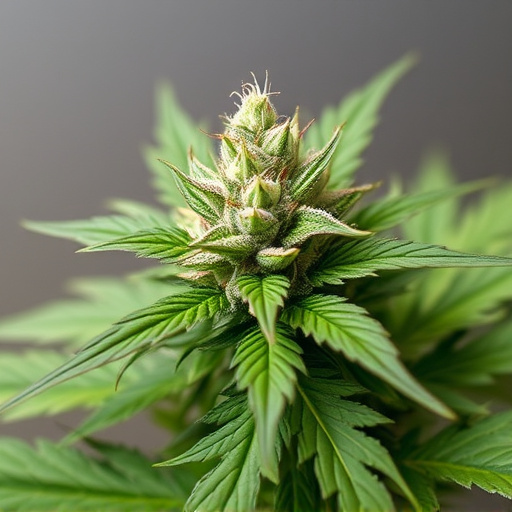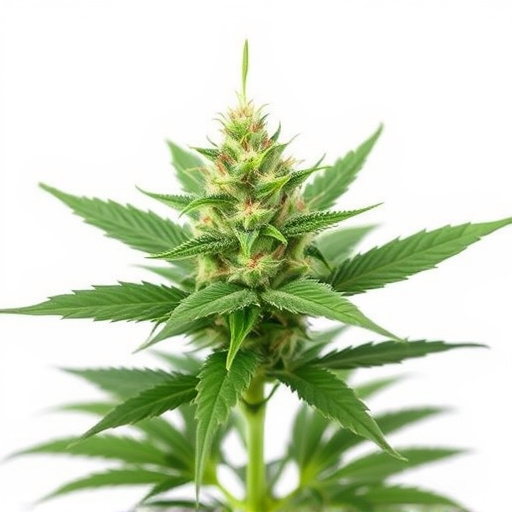High-THC cannabis strains offer benefits like appetite stimulation and pain relief but carry risks such as increased heart rate, paranoia, and cognitive impairment. These strains' potent effects stem from their interaction with endocannabinoid receptors and unique terpene profiles, contributing to the "best tasting cannabis strains." Responsible use involves understanding short-term and long-term impacts, especially on memory and focus, to balance therapeutic benefits against adverse effects while navigating the growing cannabis market.
“Unraveling the complexities of high-THC strains, this comprehensive guide explores the multifaceted impact on mind and body. From understanding the science behind THC’s interaction with physiological systems to deciphering its psychological effects, we delve into both the potential risks and creative benefits.
Furthermore, we illuminate the art of choosing the best tasting cannabis strains, considering flavor profiles, aroma, and personal preferences. Discover how to navigate this evolving landscape, ensuring a harmonious blend of potency and pleasure.”
- The Impact of High-THC on the Body
- – Understanding THC and its effects on physiological systems
- – Short-term and long-term physical impacts of high-THC consumption
The Impact of High-THC on the Body

High-THC strains, often sought after by cannabis enthusiasts for their potent effects, can have significant impacts on the body. The increase in THC levels leads to a wide range of physiological changes. One notable effect is the stimulation of appetite, making these strains particularly appealing, especially for those looking to stimulate their metabolism or manage conditions like anorexia. Additionally, high THC can induce relaxation and pain relief by binding to endocannabinoid receptors, which may help alleviate muscle tension and chronic pain.
However, it’s crucial to consider that excessive consumption of high-THC strains may also lead to adverse effects such as increased heart rate, paranoia, and anxiety. Some individuals might experience a sense of disorientation or cognitive impairment, impacting their ability to perform tasks requiring focus and concentration. Thus, while best tasting cannabis strains with high THC can offer therapeutic benefits, responsible use is essential to avoid potential drawbacks.
– Understanding THC and its effects on physiological systems

The active compound tetrahydrocannabinol (THC) is renowned for its mind-altering effects, but it also interacts with various physiological systems in the body. Beyond its psychoactive properties, THC has been shown to impact pain perception, appetite regulation, and memory formation. In terms of popular choices, many seek out high-THC strains not just for their potent effects, but also for their diverse terpene profiles that contribute to unique flavors, often described as the best tasting cannabis strains. These terpenes can add fruity, floral, or spicy notes, enhancing the overall sensory experience.
When consumed, THC binds to cannabinoid receptors located throughout the body and brain, leading to a range of short-term effects. These include heightened sensitivity to sights and sounds, altered sense of time, and changes in mood and cognition. Longer-term effects are also possible with chronic use, impacting memory, focus, and potentially triggering anxiety or paranoia in some individuals. Understanding these multifaceted impacts is crucial for navigating the growing landscape of cannabis consumption, especially as high-THC strains continue to gain popularity among those seeking relief or recreational experiences.
– Short-term and long-term physical impacts of high-THC consumption

High-THC strains, while popular among cannabis enthusiasts, especially those looking for potent experiences, come with both short-term and long-term physical impacts. In the short term, users may experience heightened senses, increased heart rate, and a rush of euphoria due to THC’s interaction with the endocannabinoid system. However, this can also lead to dizziness, paranoia, and anxiety in some individuals, particularly with excessive consumption or strains known for their high THC content. These immediate effects are often sought after by users looking for pain relief, relaxation, or a creative boost.
Long-term use of high-THC strains may result in tolerance development, where higher doses are required to achieve the same desired effects. This can lead to an increased risk of dependence and withdrawal symptoms when usage is suddenly reduced. Additionally, regular consumption has been linked to potential cognitive impacts, such as memory and concentration issues, especially among younger users whose brains are still developing. Exploring best tasting cannabis strains with balanced THC-to-CBD ratios may help mitigate these risks by offering potent effects without the same level of negative side effects.
In conclusion, while high-THC strains offer distinct benefits in terms of relaxing the mind and treating specific conditions, it’s crucial to be aware of their potential impacts on both the body and mind. Understanding the effects of THC on physiological systems is key to making informed decisions when selecting a strain, especially from the growing array of best tasting cannabis strains available. Balancing short-term relief with long-term health considerations ensures a harmonious relationship between cannabis consumption and overall well-being.














